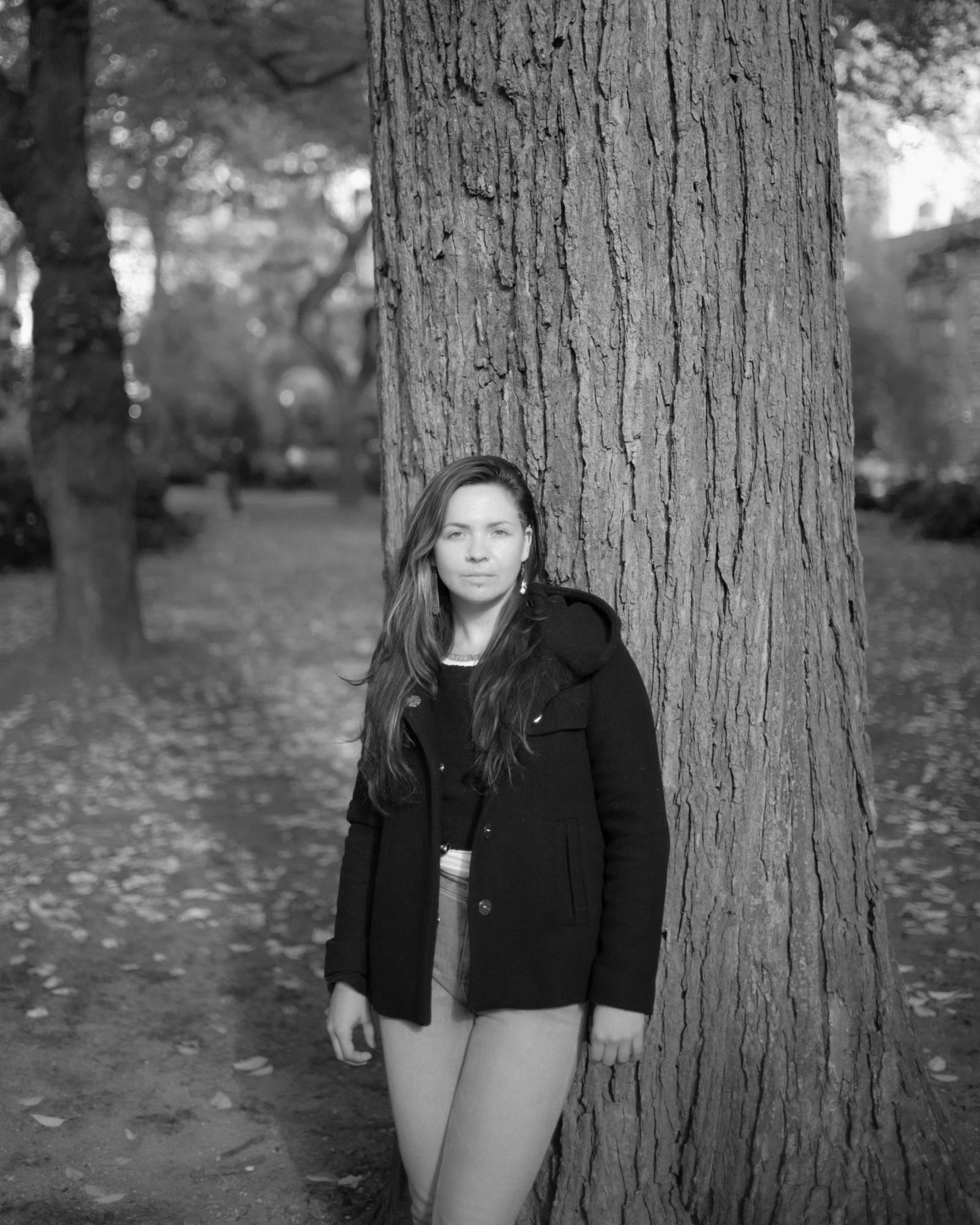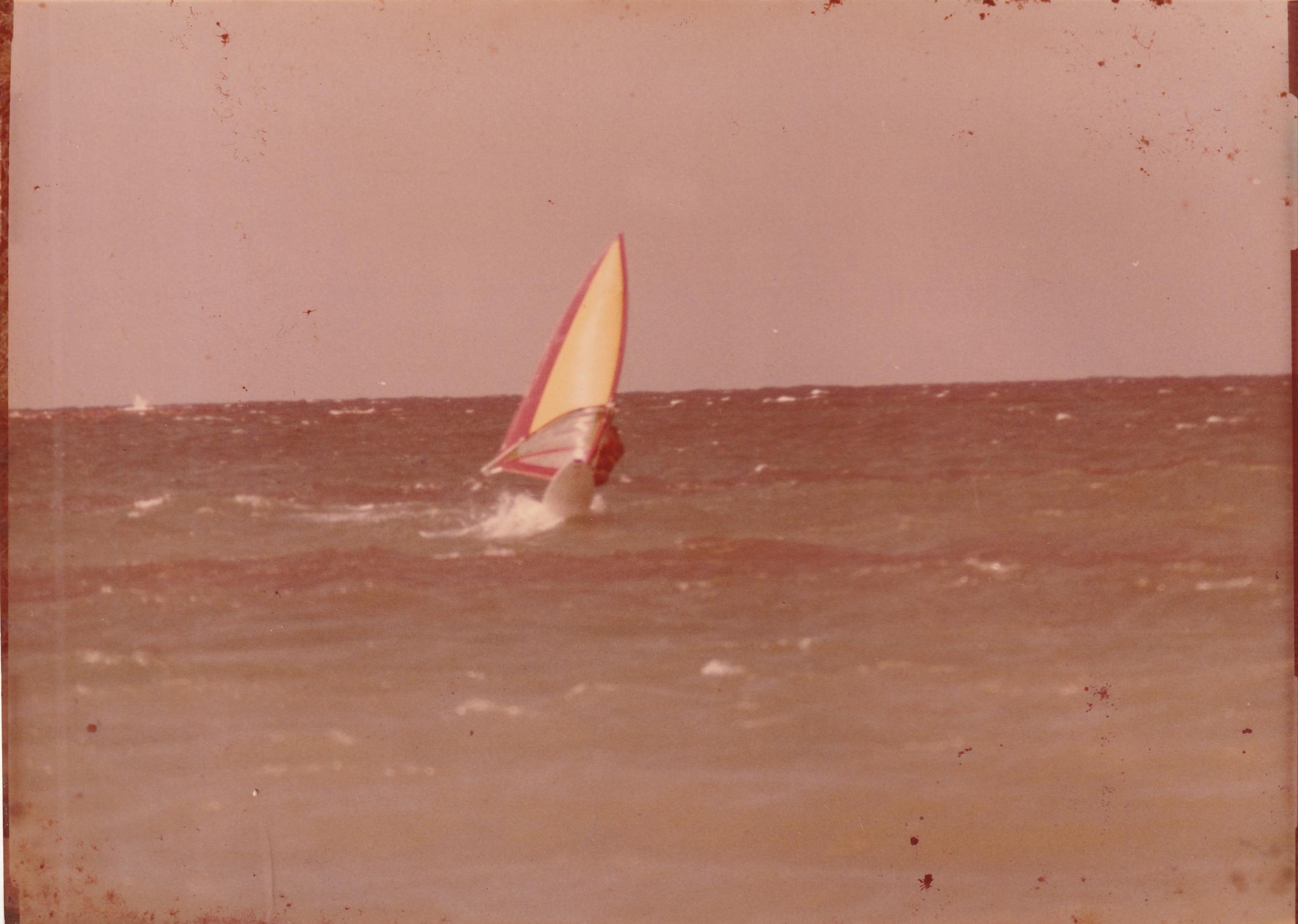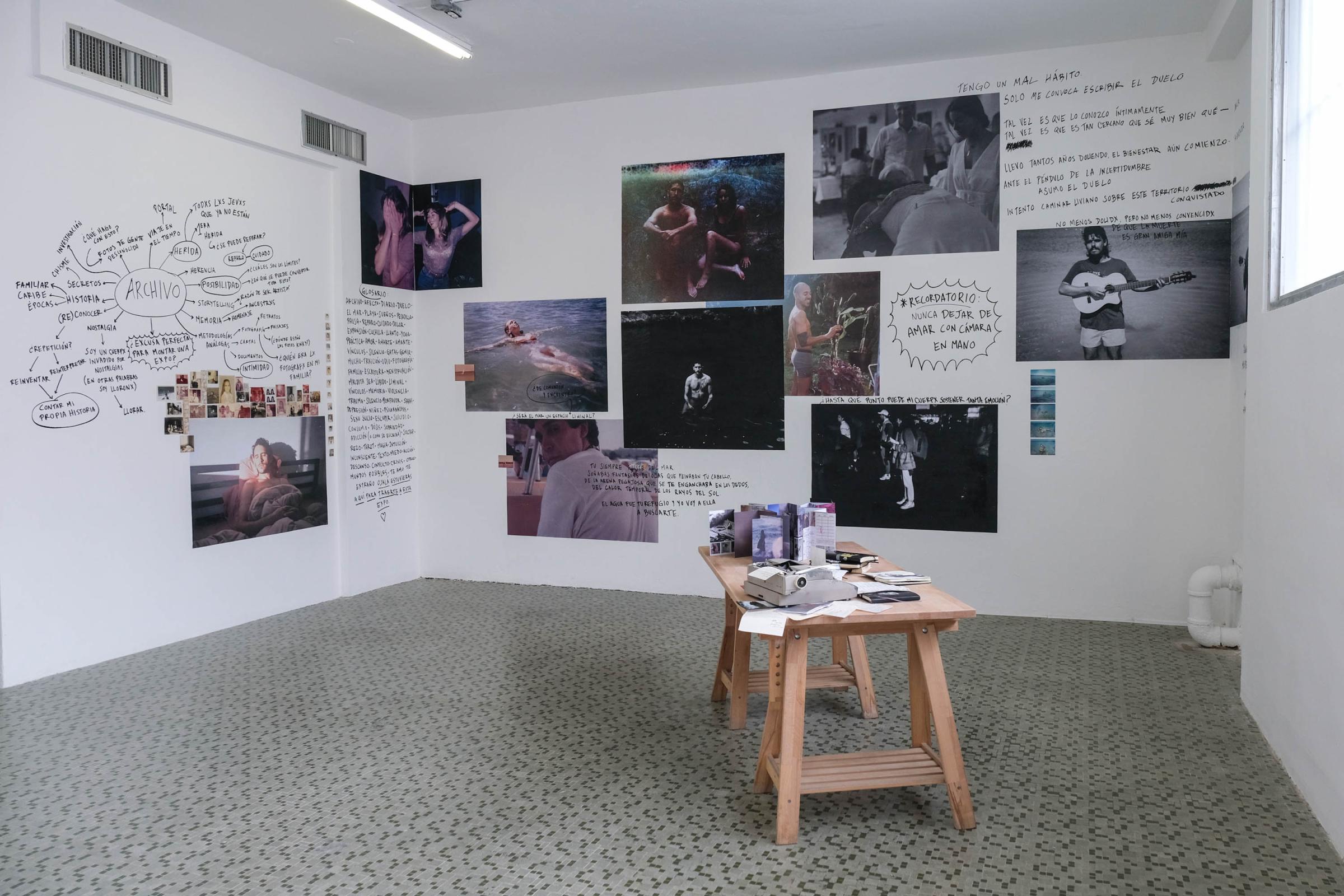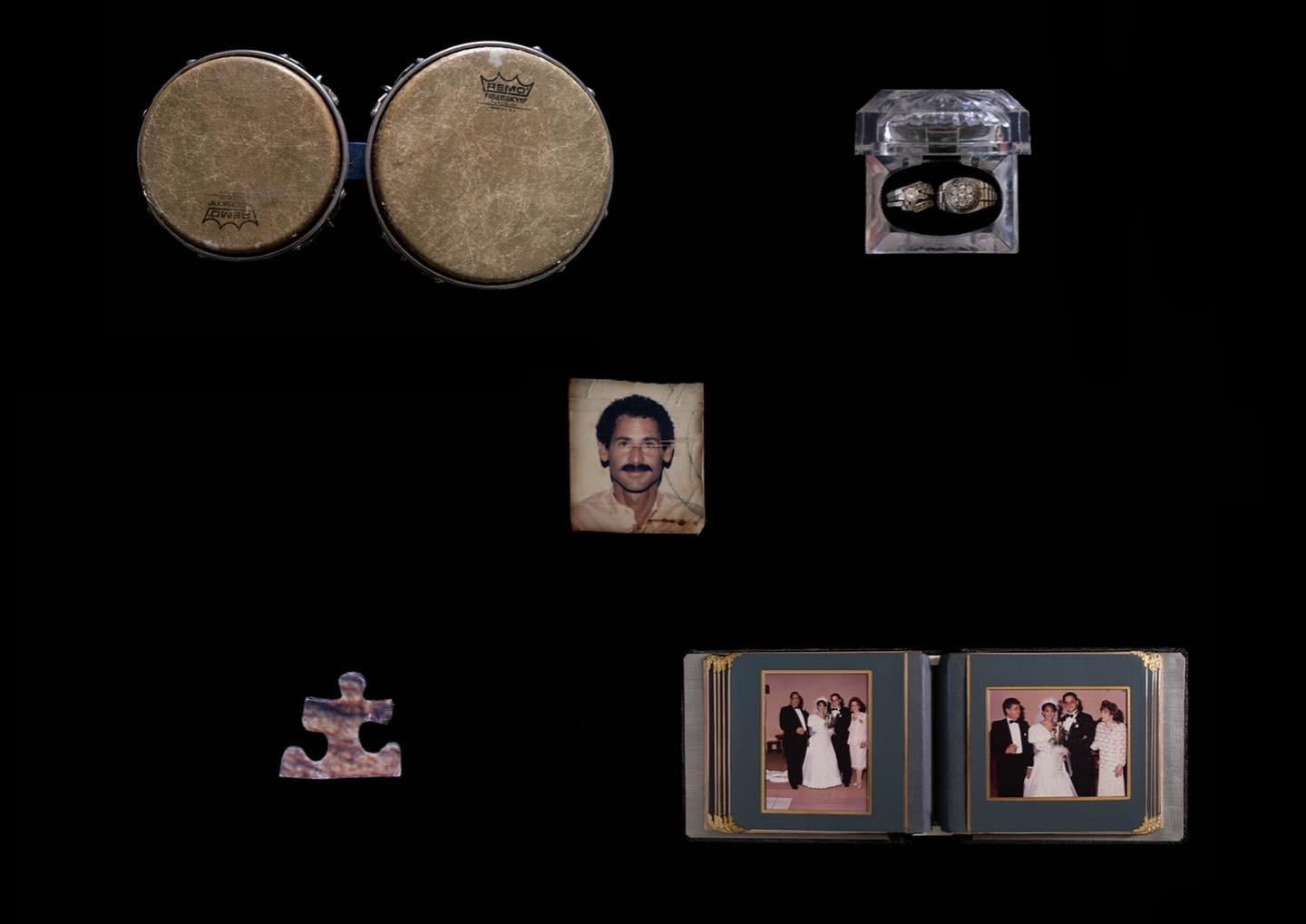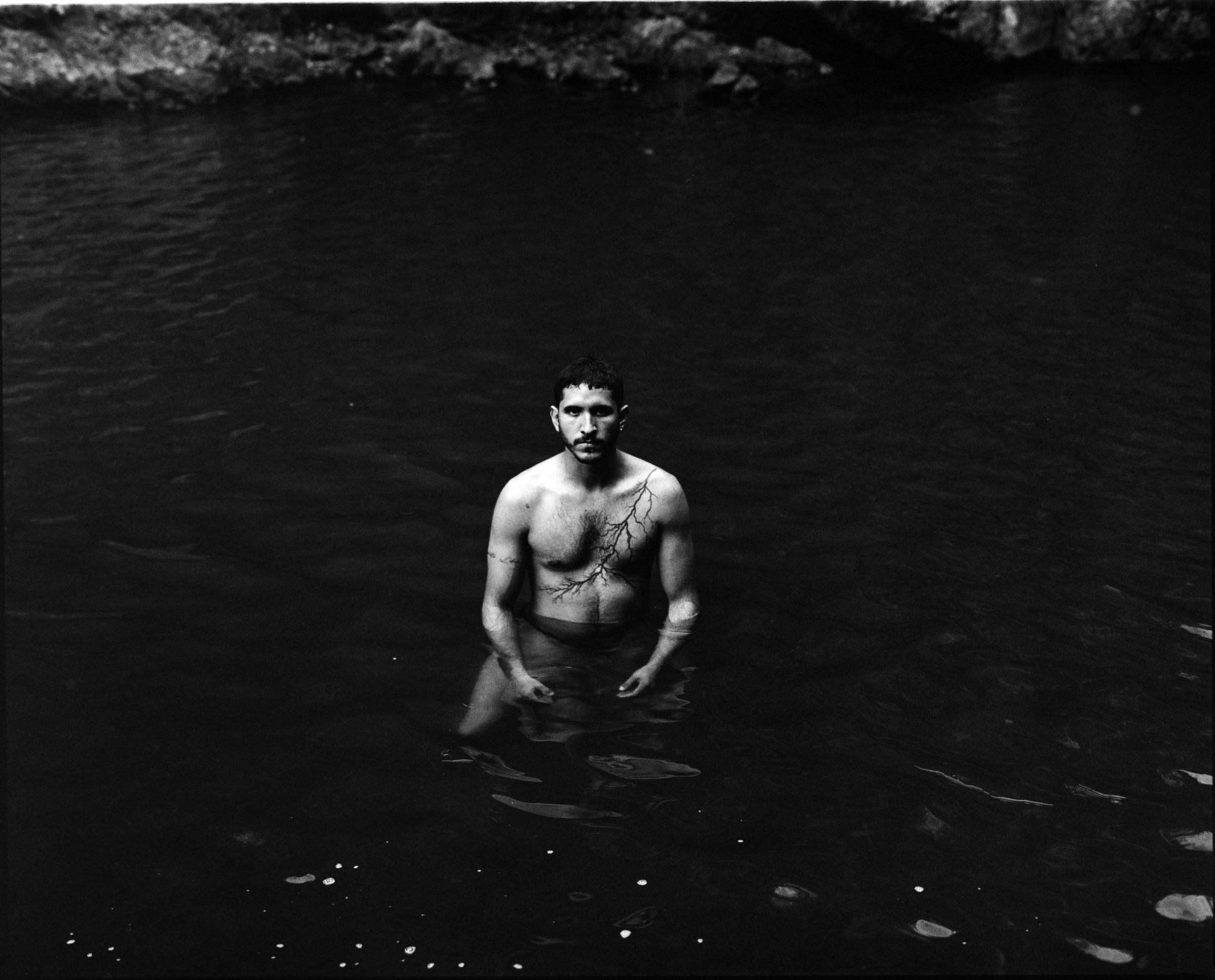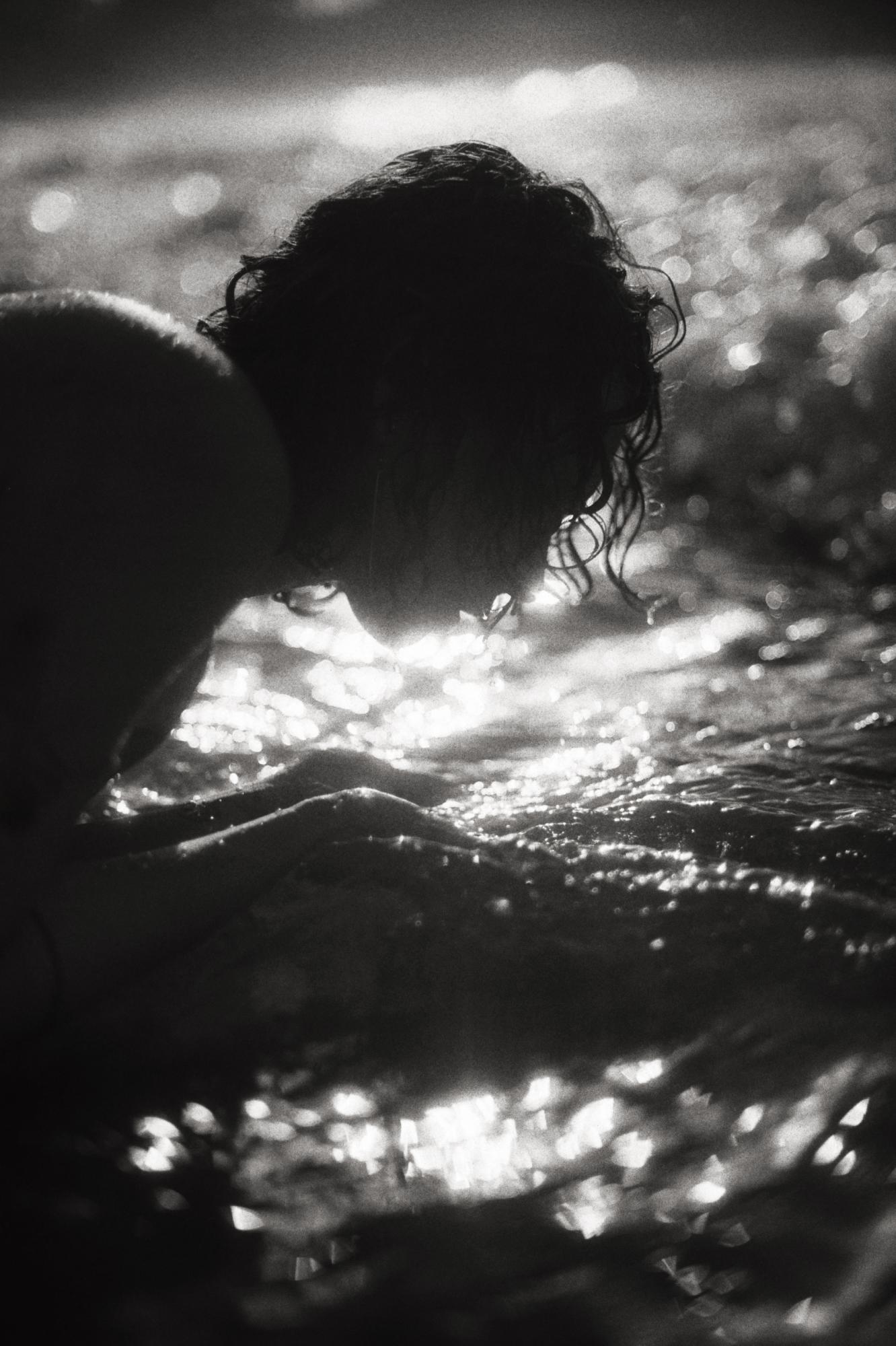Visura: Gabriella N. Báez on Grief, Healing, and the Diary as Archive
Gabriella N. Báez is a visual artist and documentary storyteller born and raised in Puerto Rico. Báez’s work explores mental health, grief, the body, and the queer community.
In 2022, Báez collaborated with the independent Colombian publisher Raya Editorial to release their debut photo book, La gente deprimida tiene sexo sucio y ganas de morir. Created over a two-year period, this book intertwines polaroid photography, text, and drawing to explore the intricate relationship between sex, depression, and identity.
An installation by Báez was exhibited at the 2023 Whitney Museum of American Art show titled, no existe mundo poshuracán: Puerto Rican Art in the Wake of Hurricane Maria. This show investigates the aftermath of the hurricane on the social, political, environmental, and psychological landscapes of Puerto Rico.
Their work has been featured in publications including National Geographic, TIME, The New York Times, and The Nation. They are a Magnum Foundation Photography and Social Justice Fellow and Grantee and an IWMF Howard G. Buffett Fund for Women Journalists Grantee. Currently, they are completing an MFA in graphic design at Yale University.
I had the opportunity to connect with Gabriella, while she was traveling in Puerto Rico to learn more about her work and vision.
This interview has been edited for clarity and length.
Puma and Salo pose for a portrait at El Panapén in Naranjito, Puerto Rico. Shot on 120mm film. This image was part of the exhibition soy yo quien te ama y te duele at the independent gallery El Lobi in Santurce, Puerto Rico. Photo by Gabriella N. Báez.
When did you decide to be a documentary photographer?
Gabriella N. Báez: I was always the artsy person in my family. Throughout my life, I've had a diary practice.
At some point, my older sister had a boyfriend. His parents were photojournalists, and on this one occasion, they showed me their archives. I was so moved and impressed by seeing a whole other vision and story of Puerto Rico that I had never come across at school or through my family. It was another version of my country that I had never experienced.
That was the first time I learned about documentary photography. I was around 15 or 16 years old. Although I was interested in it, I didn't start photographing at that time.
In 2016, when I started at the University of Puerto Rico, I was an anthropology student. At some point, I took a course on media studies. One of the assignments was to do a photo essay. I picked up a camera and started photographing, and I was like, “Yeah, I am convinced this is what I am gonna do.”
At the same time, there was a really big student strike, and the whole country was very politically active. This was right before the hurricane. The Fiscal Control Board, also known as PROMESA, had been recently implemented.
PROMESA is a colonial debt restructuring experiment signed into law under the Obama administration, which proposed major austerity measures and budget cuts to essential services like education, health, and transportation, among others. I remember as a student at the time seeing a lot of misrepresentations of the student movement in the press.
I already had this tool of photography. I 'faked it till I made it' and was like, "I'm gonna be the student photojournalist." It was then that I began to take my practice more seriously.
During that period, I also had a keen interest in visual anthropology research methods and photography, particularly as a primary method of collecting data. As a beginner, I looked up to all these famous photojournalists, who have incredible work, but I was trying to imitate their voices.
With the death of my father, things shifted towards more artistic, introspective, and personal work. I began exploring photography and finding my own voice at that time.
---------------
Gabriella N. Báez: I was always the artsy person in my family. Throughout my life, I've had a diary practice.
At some point, my older sister had a boyfriend. His parents were photojournalists, and on this one occasion, they showed me their archives. I was so moved and impressed by seeing a whole other vision and story of Puerto Rico that I had never come across at school or through my family. It was another version of my country that I had never experienced.
That was the first time I learned about documentary photography. I was around 15 or 16 years old. Although I was interested in it, I didn't start photographing at that time.
In 2016, when I started at the University of Puerto Rico, I was an anthropology student. At some point, I took a course on media studies. One of the assignments was to do a photo essay. I picked up a camera and started photographing, and I was like, “Yeah, I am convinced this is what I am gonna do.”
At the same time, there was a really big student strike, and the whole country was very politically active. This was right before the hurricane. The Fiscal Control Board, also known as PROMESA, had been recently implemented.
PROMESA is a colonial debt restructuring experiment signed into law under the Obama administration, which proposed major austerity measures and budget cuts to essential services like education, health, and transportation, among others. I remember as a student at the time seeing a lot of misrepresentations of the student movement in the press.
I already had this tool of photography. I 'faked it till I made it' and was like, "I'm gonna be the student photojournalist." It was then that I began to take my practice more seriously.
During that period, I also had a keen interest in visual anthropology research methods and photography, particularly as a primary method of collecting data. As a beginner, I looked up to all these famous photojournalists, who have incredible work, but I was trying to imitate their voices.
With the death of my father, things shifted towards more artistic, introspective, and personal work. I began exploring photography and finding my own voice at that time.
---------------
Stitched image (recto) from Ojalá nos encontremos en el mar (Hopefully, We'll Meet at Sea) on grieving my father's death by suicide in the aftermath of Hurricane María. This meditative piece fixes the bond between my father and I in time and in perpetuity, and speculates on the mental-health conditions that are passed down generation to generation. However, despite this acknowledgement, the piece does not exonerate the state from its negligence toward mental health and vulnerable populations in the aftermath of disasters. This image is part of the installation for the exhibition no existe un mundo poshuracán: Puerto Rican Art in the Wake of Hurricane María at the Whitney Museum of American Art (November 23, 2022 - April 23, 2023). Photo by Gabriella N. Báez.
In 2018, you began the long-term project, 'ojala nos encontremos en el mar.' What inspired the name? And what can you share with us about this project that you have not shared before?
The project is called, "ojala nos encontremos en el mar" or "hopefully, we'll meet at sea".
My father was a windsurfer. The beach was like his safe space. It was a place where he could exist in peace and be very genuine with himself.
I don't have a piece of my father physically. The sea is where I go to make communion. I remember him and hold space; and, I mourn.
The beach is also very symbolic. Coming from Puerto Rico as an island, there is the idea that the ocean serves as a border, and, at the same time, as a bridge between spaces. It feels that way, a very liminal, dreamlike space where you can connect with more subtle energies and movement.
---------------
The project is called, "ojala nos encontremos en el mar" or "hopefully, we'll meet at sea".
My father was a windsurfer. The beach was like his safe space. It was a place where he could exist in peace and be very genuine with himself.
I don't have a piece of my father physically. The sea is where I go to make communion. I remember him and hold space; and, I mourn.
The beach is also very symbolic. Coming from Puerto Rico as an island, there is the idea that the ocean serves as a border, and, at the same time, as a bridge between spaces. It feels that way, a very liminal, dreamlike space where you can connect with more subtle energies and movement.
---------------
Archive image from the series Ojalá nos encontremos en el mar (Hopefully, We'll Meet at Sea) on grieving my father's death by suicide in the aftermath of Hurricane María. Photo by Gabriella N. Báez.
How do you hope this project impacts audiences?
I hope viewers take away that grief is something that we should all be talking about. I also hope they see how photography and talking about our losses and pains through art is a medium of healing.
---------------
I hope viewers take away that grief is something that we should all be talking about. I also hope they see how photography and talking about our losses and pains through art is a medium of healing.
---------------
Valeria S. Fernández González poses for a portrait on the roof of her home in the Santurce district of San Juan, Puerto Rico. The researcher and performance artist, who lost both her grandfather and father in the aftermath of Hurricane María, says the grief is indescribable. "The everyday struggle, the political chaos, all that on top of my individual grief," she says. "At some point I think my defense mechanism was to stop feeling, to become numb." Published in National Geographic on September 15, 2022. Photo by Gabriella N. Báez.
As you were developing "ojalá nos encontremos en el mar," you also photographed an assignment for National Geographic about the aftermath of Hurricane Maria. Is there a connection between this assignment and your personal project?
The project for NatGeo was one that I had always wanted to do.
The lack of government recognition of the number of deaths and failure to take responsibility was extremely violent for the remaining family members. I wanted to connect with other people that had lost loved ones in the aftermath of the storm.
Although this project has been ongoing for four years, I worked on the density of the fieldwork last August. I attended support groups for grieving families and made connections along the way. I was also open and vulnerable about my experience of loss while working closely with people.
It was a really special project for me, not just because it was the fifth anniversary of the storm, but also because I felt like I wanted to give something: putting some justice in the situation that happened, putting together those voices and talking about that loss, and discussing how, five years later, we are still grieving those losses. We still feel like enough hasn't been done.
In some way, I felt like I was bringing justice to my father's death and to the loss of my family. As a result of this project, I was also able to connect with other families and develop really strong bonds with them. I still have a really close relationship with three of them.
Now, we are not just collaborators, but we are friends.
CAREER TIPS
Installation shot of the exhibition soy yo quien te ama y te duele at the independent gallery El Lobi in Santurce, Puerto Rico. Photo by Gabriella N. Báez.
As a visual artist and documentary storyteller, what are the three biggest challenges you face today?
As a documentary photographer and artist in Puerto Rico, there is a lot of competition and very few opportunities. There is a problem with cultural nuance and understanding. Most of the assignments I receive are related to natural disasters, millionaires moving to Puerto Rico, or tourism. It is a one-sided perspective that has to completely engage the US in a sentence.
The media does not discuss Puerto Rico on its own, but always in relation to the US. It's extremely frustrating and a limited view of the island's richness. This type of assignment is one of the few opportunities in Puerto Rico. I think this limits our ability to tell stories now.
Whenever I have worked on my own projects, I always had to justify why it was important, and it always had something to do with the US. Despite the increased political awareness and literacy in the media, especially with editors and assignments, it remains very colonial.
---------------
As a documentary photographer and artist in Puerto Rico, there is a lot of competition and very few opportunities. There is a problem with cultural nuance and understanding. Most of the assignments I receive are related to natural disasters, millionaires moving to Puerto Rico, or tourism. It is a one-sided perspective that has to completely engage the US in a sentence.
The media does not discuss Puerto Rico on its own, but always in relation to the US. It's extremely frustrating and a limited view of the island's richness. This type of assignment is one of the few opportunities in Puerto Rico. I think this limits our ability to tell stories now.
Whenever I have worked on my own projects, I always had to justify why it was important, and it always had something to do with the US. Despite the increased political awareness and literacy in the media, especially with editors and assignments, it remains very colonial.
---------------
Carmen Yolanda Medina (center) sits with her grandchildren, Rodrigo Robles and Andrea Robles, in Bayamón, Puerto Rico. The family patriarch, Ariel Robles, died in a fatal accident a year after the storm, which his widow and grandchildren blame on accumulated anxiety stemming from hardships created by the storm. They spent nearly a year without electricity. Published in National Geographic on September 15, 2022. Photo by Gabriella N. Báez.
Any tips you can share for building a successful career in media and journalism?
Maintaining good relationships with the people you have worked with is important. It does not necessarily mean that you will agree with everything. Setting the right boundaries and advocating for yourself and your work is also an important part of having a good relationship. Keep a strong network, however.
It's a small enough community that everyone knows everyone, so why not make good, strong, valuable, collaborative relationships out of it? Consider ways to strengthen each other's work and uplift each other's stories instead of competing with one another.
It seems to me that there are more opportunities than what the industry would like us to believe. We also create those opportunities. A strong network supports a successful career.
---------------
Maintaining good relationships with the people you have worked with is important. It does not necessarily mean that you will agree with everything. Setting the right boundaries and advocating for yourself and your work is also an important part of having a good relationship. Keep a strong network, however.
It's a small enough community that everyone knows everyone, so why not make good, strong, valuable, collaborative relationships out of it? Consider ways to strengthen each other's work and uplift each other's stories instead of competing with one another.
It seems to me that there are more opportunities than what the industry would like us to believe. We also create those opportunities. A strong network supports a successful career.
---------------
This is a collage of belongings family members of people who died in the wake of Hurricane María have kept close. This project reports how five years after the storm battered Puerto Rico, many are still in mourning. Alongside the reporter Laura Pérez, we documented the grief stories of five families and the role objects played in their memory. This is a project I researched, pitched, and was later commissioned by National Geographic Magazine. This piece is directly inspired by and makes reference to my personal project "Ojalá nos encontremos en el mar" (2018 - ongoing), about grieving my father's death by suicide in the aftermath of Hurricane María.
What strategies, practices, and habits do you use to ensure success in your artistic practice?
Once I published my Hurricane Maria story, which had been in the works for the past four years, I thought, “Well, now what? ” All of my projects had ended.
My diary has really helped me sustain my practice. I always have a notebook. My two diary elements are a basic point-and-shoot camera and my notebook. There is a constant process of creating something even if it isn't a serious project or something that will be published. It's just a document of my process. It is creating…just because.
When I am in the process of making other types of projects, I always come back to my journals and my archive. This is the material that informs my work.
Right now, I have my first solo exhibition here in Puerto Rico and it is about this process. So all my notebooks are there. All the images have been photographed with my point-and-shoot camera or analog camera.
The show is all about what is in between these more formal projects. What are the images that I'm constantly making, but do not necessarily go to publish in some place. That is what sustains me personally.
---------------
Once I published my Hurricane Maria story, which had been in the works for the past four years, I thought, “Well, now what? ” All of my projects had ended.
My diary has really helped me sustain my practice. I always have a notebook. My two diary elements are a basic point-and-shoot camera and my notebook. There is a constant process of creating something even if it isn't a serious project or something that will be published. It's just a document of my process. It is creating…just because.
When I am in the process of making other types of projects, I always come back to my journals and my archive. This is the material that informs my work.
Right now, I have my first solo exhibition here in Puerto Rico and it is about this process. So all my notebooks are there. All the images have been photographed with my point-and-shoot camera or analog camera.
The show is all about what is in between these more formal projects. What are the images that I'm constantly making, but do not necessarily go to publish in some place. That is what sustains me personally.
---------------
Puma poses for a portrait at El Panapén in Naranjito, Puerto Rico. Shot on 120mm film. This image was part of the exhibition soy yo quien te ama y te duele at the independent gallery El Lobi in Santurce, Puerto Rico. Photo by Gabriella N. Báez.
Portrait of Vasti in Manati, Puerto Rico. Shot on 120mm film. This image was part of the exhibition soy yo quien te ama y te duele at the independent gallery El Lobi in Santurce, Puerto Rico. Photo by Gabriella N. Báez.
Which three strategies do you find most effective when photographing a story?
I value transparency, communication, and active participation from the people I work with. That is my primary methodology for photography.
As an example, when I am working on an assignment, I think a lot about security in myself as well as the work I am doing. It is especially difficult for queer and fem photographers to get into spaces. In order to gain more access, we need to negotiate more.
In my work, I try to be as confident and secure as possible. There have been times when I have been in a corporate setting and felt out of place because of my tattoos. However, I was hired to be there. This is the space in which we are working.
So I am here.
Let's do it.
---------------
I value transparency, communication, and active participation from the people I work with. That is my primary methodology for photography.
As an example, when I am working on an assignment, I think a lot about security in myself as well as the work I am doing. It is especially difficult for queer and fem photographers to get into spaces. In order to gain more access, we need to negotiate more.
In my work, I try to be as confident and secure as possible. There have been times when I have been in a corporate setting and felt out of place because of my tattoos. However, I was hired to be there. This is the space in which we are working.
So I am here.
Let's do it.
---------------
What is next for you?
After the Hurricane Maria story, I felt like I was kind of closing a chapter in terms of my photojournalism work and documentary photography work. In addition, I have also been feeling that many of my projects are coming to an end these past few months. In other words, the book project is almost over, and the exhibition project is underway. Furthermore, my father's project recently closed at the Whitney Museum.
---------------
I am in a phase where I am really open to new ideas and experiments. Thus, I applied to grad school. And I will be heading over to Yale University to work on graphic design. After I worked on the book project, I realized that editing and the process of thinking about how images come together and construct something three-dimensional as a book or thinking about all the graphics in a poster are really the things that move me.
With all the images from my family stored away, I often think about what could be done with them if we were to take them out of the archive, experiment with them, transform them into something else. That's what I'm really looking forward to exploring at Yale.
After the Hurricane Maria story, I felt like I was kind of closing a chapter in terms of my photojournalism work and documentary photography work. In addition, I have also been feeling that many of my projects are coming to an end these past few months. In other words, the book project is almost over, and the exhibition project is underway. Furthermore, my father's project recently closed at the Whitney Museum.
---------------
I am in a phase where I am really open to new ideas and experiments. Thus, I applied to grad school. And I will be heading over to Yale University to work on graphic design. After I worked on the book project, I realized that editing and the process of thinking about how images come together and construct something three-dimensional as a book or thinking about all the graphics in a poster are really the things that move me.
With all the images from my family stored away, I often think about what could be done with them if we were to take them out of the archive, experiment with them, transform them into something else. That's what I'm really looking forward to exploring at Yale.
